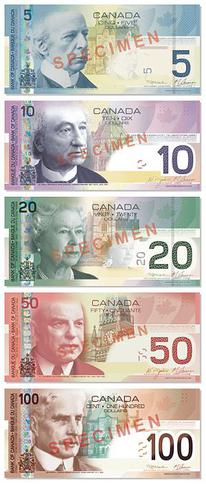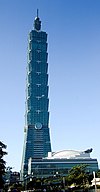The Kwacha is the currency of Zambia. It is subdivided into 100 Ngwee.

The renminbi is the official currency of the People's Republic of China. It is the 5th most traded currency as of April 2022.

The Mexican peso is the currency of Mexico. Modern peso and dollar currencies have a common origin in the 16th–19th century Spanish dollar, most continuing to use its sign, "$".

The ruble or rouble is the currency of the Russian Federation. The ruble is subdivided into 100 kopecks. It is used in Russia as well as in the parts of Ukraine under Russian military occupation and in Russian-occupied parts of Georgia.
The New Taiwan dollar is the official currency of the Republic of China (Taiwan). The New Taiwan dollar has been the currency of the island of Taiwan since 1949, when it replaced the Old Taiwan dollar, at a rate of 40,000 old dollars per one new dollar. The basic unit of the New Taiwan dollar is called a yuan (圓) and is subdivided into ten jiao (角), and into 100 fen (分) or cents, although in practice both jiao and fen are never actually used.

The Malaysian ringgit is the currency of Malaysia. It is divided into 100 sen. The ringgit is issued by the Central Bank of Malaysia.

The koruna, or crown, has been the currency of the Czech Republic since 1993. The koruna is one of the European Union's 8 currencies, and the Czech Republic is legally bound to adopt the euro currency in the future.

The Guinean franc is the currency of Guinea. It is subdivided into one hundred centimes, but no centime denominations were ever issued.

The history of Chinese currency spans more than 3000 years. Currency of some type has been used in China since the Neolithic age which can be traced back to between 3000 and 4500 years ago. Cowry shells are believed to have been the earliest form of currency used in Central China, and were used during the Neolithic period.
The yuan is the base unit of a number of former and present-day currencies in Chinese.
The Old Taiwan dollar was in use from 1946 to 1949, beginning shortly after Taiwan's handover from Japan to the Republic of China. The currency was issued by the Bank of Taiwan. Hyperinflation prompted the introduction of the New Taiwan dollar in June 1949, shortly before the Nationalist evacuation from mainland China in December.
The fifth series of the renminbi is the current coin and banknote series of the Chinese currency, the renminbi. They were progressively introduced since 1999 and consist of ¥0.1, ¥0.5, and ¥1 coins, and ¥1, ¥5, ¥10, ¥20, ¥50, ¥100 notes. The ¥20 banknote is a new denomination, and was added in this series. All banknotes in this series feature a portrait of Chinese Communist Party chairman Mao Zedong by artist Liu Wenxi.

The đồng was the currency of North Vietnam from 3 November 1946 to 2 May 1978. It was subdivided into 10 hào, each itself divided into 10 xu.

Canadian Journey is the sixth series of banknotes of the Canadian dollar designed and circulated by the Bank of Canada. It succeeded the 1986 Birds of Canada banknote series. The first banknote of the Canadian Journey series issued into circulation was the $10 bill on 17 January 2001, and the last to be issued was the $50 bill on 17 November 2004. The series was succeeded by the 2011 Frontier Series, the banknotes of which were first issued into circulation from 2011 to 2013.

Birds of Canada is the fifth series of banknotes of the Canadian dollar issued by the Bank of Canada and was first circulated in 1986 to replace the 1969 Scenes of Canada series. Each note features a bird indigenous to Canada in its design. The banknotes weigh 1 gram with dimensions of 152.40 by 69.85 millimetres. It was succeeded by the 2001 Canadian Journey series.

The Indian 1000-rupee banknote is an obsolete denomination of the Indian rupee. It was first introduced by the Reserve Bank of India in 1938 under British rule and subsequently demonetized in 1946. Post-independence, the denomination was re-introduced in 1954. In January 1978, all high-denomination banknotes of ₹1000, ₹5000, and ₹10000 were demonetized in order to curb unaccounted cash money.

The Da Ming Baochao was a series of banknotes issued during the Ming dynasty in China. They were first issued in 1375 under the Hongwu Emperor. Although initially the Da Ming Baochao paper money was successful, the fact that it was a fiat currency and that the government largely stopped accepting these notes caused the people to lose faith in them as a valid currency causing the price of silver relative to paper money to increase. The negative experiences with inflation that the Ming dynasty had witnessed signaled the Manchus to not repeat this mistake until the first Chinese banknotes after almost 400 years were issued again in response to the Taiping Rebellion under the Qing dynasty's Xianfeng Emperor during the mid-19th century.

The paper money of the Qing dynasty was periodically used alongside a bimetallic coinage system of copper-alloy cash coins and silver sycees; paper money was used during different periods of Chinese history under the Qing dynasty, having acquired experiences from the prior Song, Jin, Yuan, and Ming dynasties which adopted paper money but where uncontrolled printing led to hyperinflation. During the youngest days of the Qing dynasty paper money was used but this was quickly abolished as the government sought not to repeat history for a fourth time; however, under the reign of the Xianfeng Emperor, due to several large wars and rebellions, the Qing government was forced to issue paper money again.

The banknotes of the Ta-Ching Government Bank, known as the banknotes of the Ta-Ching Bank of the Ministry of Revenue from 1905 to 1908, were intended to become the main form of paper money in the Qing currency system. These banknotes were issued by the Ta-Ching Government Bank, a national bank established to serve as the central bank of the Qing dynasty. The Ta-Ching Government Bank had branches throughout China and many of its branches outside of its headquarters in Beijing also issued banknotes.

The Chinese gold yuan was a defunct legal tender currency of China between August 1948 and 1949. It was a method used by the Republic of China government to accumulate gold from its citizens in preparation to relocate to Taiwan. It circulated in the country under the effective control of the Government of the Republic of China known as Taiwan Province, R.O.C., which issued paper money on August 19, 1948. This currency was notorious for vicious inflation due to inadequate issuance preparation and failure to strictly enforce issuance limits. In the early days of the issuance of the Golden yuan, the government used executive actions to force the public to exchange gold, foreign currency for the new currency. The legal exchange rate was 0.22217 grams of gold per gold yuan but it could not be honored. The sharply depreciating Fabi currency was at the rate of one golden yuan of the yen to Fabi $3 million, and this rate was used for the compulsory collection of public gold, silver, and foreign currency. In particular, the economic losses suffered by the urban middle class were so great that the ROC government lost its original most important supporters and was one of the reasons why the ROC government failed so quickly in the Chinese Civil War.






















